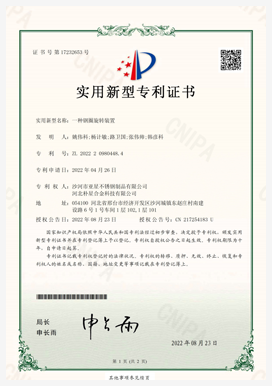grain harvester
The Evolution and Impact of Grain Harvesters
Grain harvesting has been an integral part of agriculture for centuries, evolving from manual labor to sophisticated machinery. At the heart of this transformation lies the grain harvester, a machine that has revolutionized the way crops are collected, leading to significant increases in efficiency and productivity.
The Historical Context
Historically, grain harvesting was labor-intensive, relying predominantly on manual tools like sickles and scythes. Farmers and laborers would spend long hours in the fields, cutting and gathering crops by hand. This process was not only tedious but also time-consuming, which limited the scale of agriculture. As populations grew and the demand for food increased, the need for more efficient harvesting methods became apparent.
The Birth of Mechanization
The first significant leap towards mechanized grain harvesting came in the early 19th century with the invention of the mechanical reaper. Cyrus McCormick is often credited with creating the first commercially successful mechanical reaper in 1834. This invention dramatically reduced the time and labor required to harvest grain, allowing farmers to cover larger areas and thus increase their yields. The reaper functioned by cutting the grain stalks and dropping them onto the ground, where they could be gathered later.
As technology advanced, so did the designs of harvesting equipment. The introduction of the combine harvester in the late 19th century marked a key milestone in agricultural machinery. Combining the functions of reaping, threshing, and winnowing into one machine, the combine harvester transformed grain harvesting into a streamlined process. This multi-functional equipment became indispensable for modern farmers, significantly reducing the time taken to harvest crops.
Technological Advancements
Today, grain harvesters come equipped with a plethora of technological advancements. Modern machines utilize GPS technology, enabling precision agriculture that allows farmers to monitor and manage their fields more effectively. This technology enhances efficiency, ensuring that the harvest is executed with maximum accuracy and minimal waste.
grain harvester

Furthermore, the integration of sensors and artificial intelligence in grain harvesters has further optimized their performance. These machines can now analyze field conditions in real time, adjusting their operations based on factors such as crop moisture levels and density. This data-driven approach not only improves the efficiency of the harvest but also contributes to better grain quality, which is essential for meeting market standards.
Environmental Considerations
As the agricultural sector confronts challenges posed by climate change and environmental sustainability, the grain harvesting industry is also evolving to address these concerns. Many manufacturers are developing eco-friendly harvesting equipment that minimizes soil compaction and reduces fuel consumption. Techniques such as no-till farming, combined with advanced harvesting technology, promote soil health and reduce erosion.
Moreover, innovations in biofuel technology are leading some harvesters to operate on alternative energy sources, which can lessen the carbon footprint associated with traditional diesel-powered machines. These developments reflect a broader trend in agriculture toward sustainable practices, ensuring the industry can meet future food demands without compromising the environment.
Economic Implications
The impact of grain harvesters extends beyond the fields; it plays a crucial role in the global economy. With the ability to harvest crops more efficiently, farmers can increase their productivity, leading to lower food prices and improved food security. Additionally, the rise of agribusiness has created new markets and job opportunities, contributing to rural development.
However, the reliance on advanced machinery also poses challenges. Smaller farms may struggle to keep up with the cost of high-tech equipment and may find themselves at a disadvantage in a competitive market. As such, there is ongoing discourse about balancing technological advancement with equitable access to resources in agriculture.
Conclusion
Grain harvesters represent not only a technological triumph but also a testament to humanity's continuous pursuit of innovation in agriculture. As we look to the future, the ongoing evolution of these machines will play a pivotal role in shaping the efficiency and sustainability of food production. Striking a balance between technological advancement and environmental stewardship will be crucial in ensuring that the agricultural sector continues to thrive while addressing the pressing challenges of our time.
Latest news
-
When to Upgrade Your Old Forage HarvesterNewsJun.05,2025
-
One Forage Harvester for All Your NeedsNewsJun.05,2025
-
Mastering the Grass Reaper MachineNewsJun.05,2025
-
How Small Farms Make Full Use of Wheat ReaperNewsJun.05,2025
-
Harvesting Wheat the Easy Way: Use a Mini Tractor ReaperNewsJun.05,2025
-
Growing Demand for the Mini Tractor Reaper in AsiaNewsJun.05,2025
